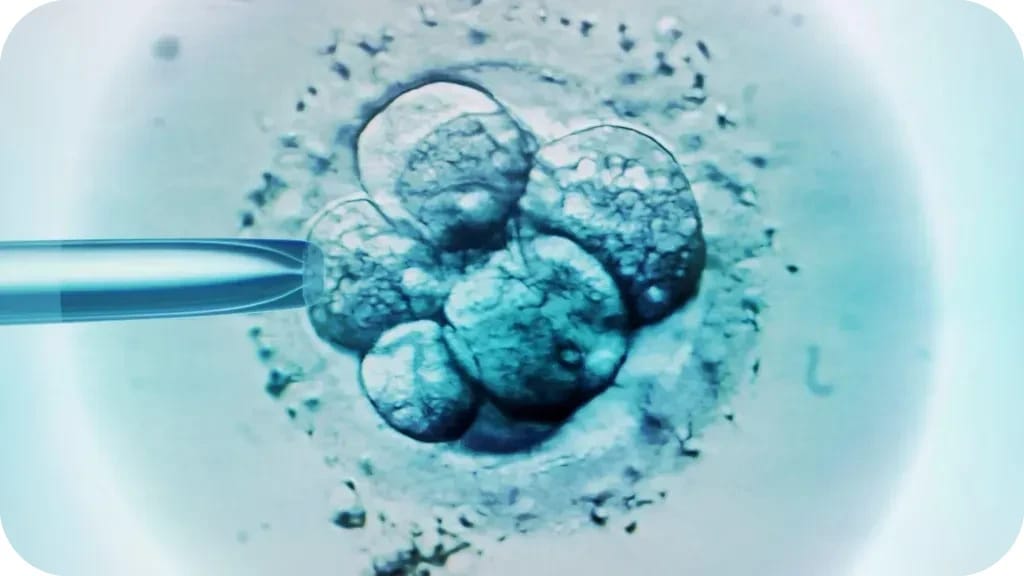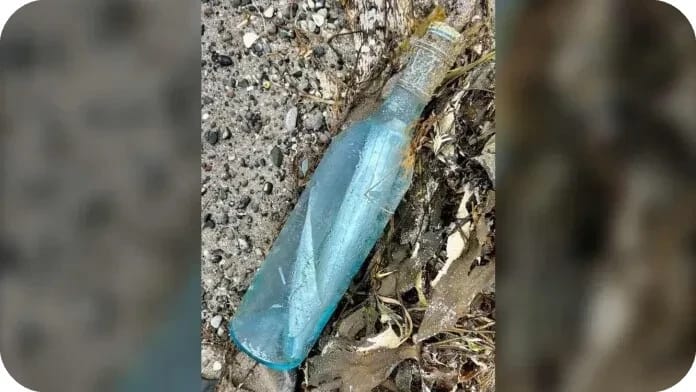- Daily Upsider
- Posts
- 🌞DNA Trio Beats Disease
🌞DNA Trio Beats Disease
Daily Upsider - Sunday, July 20th, 2025
Sunday, July 20th, 2025
Good Afternoon! 🌞
Good news, straight to your inbox!
Every day brings something worth smiling about—and today is no exception. From medical milestones to small acts of kindness, we’re here to share the stories that remind us the world is still full of wonder, hope, and a whole lot of heart. Let’s take a deep breath, sip something warm, and dive into today’s uplifting headlines. 🌞
Today’s Upside
Health Sciences
DNA Trio Beats Disease

Getty Images
Eight children have been born in the UK using a groundbreaking fertility technique that combines DNA from three people—a medical milestone aimed at preventing the inheritance of devastating mitochondrial diseases. While the procedure has been legally approved in the UK since 2015, these births mark the first real-world confirmation that the method works. For families at risk of passing on conditions that can cause muscle weakness, organ failure, or early death, it offers something once unthinkable: a healthy, biologically related child. “After years of uncertainty this treatment gave us hope—and then it gave us our baby,” said one mother. “We look at them now, full of life and possibility, and we're overwhelmed with gratitude.”
The science is intricate but the goal is clear. Eggs from both the mother and a healthy donor are fertilized with the father’s sperm. Then, the nuclear DNA—responsible for traits like hair color and height—from the parents is transferred into the donor’s egg, which contains healthy mitochondria. The resulting embryo is 99.9% genetically identical to the parents, with just 0.1% of DNA from the donor. That small slice, though, carries significance: mitochondrial DNA is inherited solely from the mother, so daughters will pass it on. This creates a permanent change in the human germline—a point that fueled intense ethical debate before Parliament approved the procedure. Critics warned of a slippery slope to “designer babies.” Supporters insisted it was about survival, not enhancement. For the parents involved, the answer is simple. “Thanks to this incredible advancement and the support we received, our little family is complete,” said another mother. “The emotional burden of mitochondrial disease has been lifted, and in its place is hope, joy, and deep gratitude.”
According to two reports in the New England Journal of Medicine, 22 families received the treatment at Newcastle Fertility Centre. So far, eight babies have been born—four girls, four boys, including twins—with another pregnancy underway. Most are meeting developmental milestones. One had temporary epilepsy, and another has an abnormal heart rhythm, but neither issue is believed to be linked to the technique. In five of the eight, no faulty mitochondria were detected. In the remaining three, minor traces (5–20%) were found—far below the threshold typically associated with illness. “The findings give grounds for optimism,” said Professor Mary Herbert of Newcastle University and Monash University. “However, research to better understand the limitations of mitochondrial donation technologies will be essential to further improve treatment outcomes.” For families like the Kittos, that future can’t come soon enough. Kat’s daughter Poppy, 14, lives with mitochondrial disease. Her older daughter, Lily, 16, may one day face passing it on. “It's impacted a huge part of her life,” Kat said. For Lily, this three-parent technique could offer something powerful: “the outlook of a normal life” for generations to come.
While the science behind this may stir some mixed feelings, especially for those who hold traditional views on conception, it’s hard to overlook the profound hope this brings. For parents facing inherited diseases that once made having a healthy child feel impossible, this breakthrough could mean everything.
It’s not about playing God—it’s about giving life a fighting chance. And for families who’ve known only heartbreak, that’s a kind of miracle science is now making possible.
@itvnews Eight babies born in UK each using three people's DNA in groundbreaking treatment #itvnews #news
Environment
Trees Turning to Stone?

Freepik
Some fig trees may be doing more for the planet than just bearing fruit. Researchers have discovered that certain species of Ficus trees, growing in Kenya, can absorb carbon dioxide (CO2) and convert it into calcium carbonate—a mineral that stores carbon in a far more stable and long-lasting form than organic carbon. This process, known as the oxalate-carbonate pathway, effectively turns parts of these trees—and the soil around them—into stone. Among the species studied, Ficus wakefieldii stood out as particularly efficient at this unusual form of carbon storage.
All trees take in CO2 and convert it into organic carbon through photosynthesis, building their trunks, branches, and leaves. But some trees, like these Ficus species, also produce calcium oxalate crystals. As the trees decompose, specialized microbes convert those crystals into calcium carbonate, the same compound found in chalk and limestone. “We’ve known about the oxalate carbonate pathway for some time, but its potential for sequestering carbon hasn’t been fully considered,” said Dr. Mike Rowley, senior lecturer at the University of Zurich. “If we’re planting trees for agroforestry and their ability to store CO2 as organic carbon while producing food, we could choose trees that provide an additional benefit by sequestering inorganic carbon also, in the form of calcium carbonate.”
Dr. Rowley and his team traced where in the soil and wood the calcium carbonate forms and studied the microbes involved. “As the calcium carbonate is formed, the soil around the tree becomes more alkaline,” he said. “The calcium carbonate is formed both on the surface of the tree and within the wood structures, likely as microorganisms decompose crystals on the surface and also, penetrate deeper into the tree. It shows that inorganic carbon is being sequestered more deeply within the wood than we previously realized.” The team now plans to study F. wakefieldii’s potential for agroforestry, examining its water needs, fruit production, and CO2 sequestration under varying conditions. While past research on this pathway focused mostly on non-fruiting tropical trees like the Iroko (Milicia excelsa), this new study suggests many more useful species could be waiting to be discovered. “It’s easier to identify calcium carbonate in drier environments,” said Rowley, “however, even in wetter environments, the carbon can still be sequestered... the oxalate-carbonate pathway could be a significant, underexplored opportunity to help mitigate CO2 emissions as we plant trees for forestry or fruit.”
World News
‘Love Conquers the Atlantic’

A bottle containing a note from a Newfoundland couple is shown on a beach in southwestern Ireland – credit Kate Gay, handout
From the rocky cliffs of Newfoundland to the windswept beaches of Ireland, a message in a wine bottle has bridged the distance of 1,800 miles—and 13 years—between two strangers. In 2012, Brad and Anita, long-distance sweethearts at the time, were enjoying a picnic on Bell Island, off the coast of Newfoundland. Caught up in the romance of the moment, they decided to scribble a letter and seal it inside the wine bottle they had just emptied. “Today we enjoyed dinner, this bottle of wine and each other on the edge of the island,” Anita wrote. Brad, a rookie police officer back then, launched it into Conception Bay with a hopeful heave, uncertain whether it had even cleared the nearby rocks.
On July 7th, 2025, the bottle washed ashore on the Maharees Peninsula in southwest Ireland. It was discovered by Kate and Jon Gay, who were walking the coast and cracked it open later that evening with members of their local conservation group. After reading the heartfelt letter aloud, the group scrambled to track down the mystery couple behind the message. In less than an hour, a local named Martha Farrell received a text confirming that Brad and Anita were not only still together—they were now married with three children. “And then I said, ‘Yay, love conquers all—and the Atlantic Ocean!’” Farrell said in an interview.
The couple, now the Squires, tied the knot in 2016 and are set to celebrate their 10th wedding anniversary next year, along with their two teenagers and youngest child. Coincidentally, the Maharees Conservation Association—co-founded by Farrell in 2016—is also celebrating its 10th year in 2026. “Anita and I both feel like we have new friends, and we’re all equally amazed,” Brad Squires told Canada Press. “I guess we have some people to visit and a trip to probably plan.”
Support Daily Upsider!
Help our mission to share positive, meaningful news! Your support keeps us going without the need to bombard you with annoying ads!

"Sunday brings along endless moments of joy and peace. Cherish them to create beautiful memories."
Mind Stretchers
⁉️
I have four legs but do not run,
I welcome you when the day is done.
I hold your dreams and cradle your head,
Soft and still—what am I?
Answers to yesterday’s Mind Stretchers:

— copycat, Linda Holmes got this first! ☀️
The first to send us the correct answer for today’s mind stretcher for a shout-out with the answer tomorrow. Just send us the answer and your name to [email protected] or reply to the email.
From the Community
If you have any uplifting stories and experience you might want to share, send those over to [email protected] for the chance to be featured
Reply